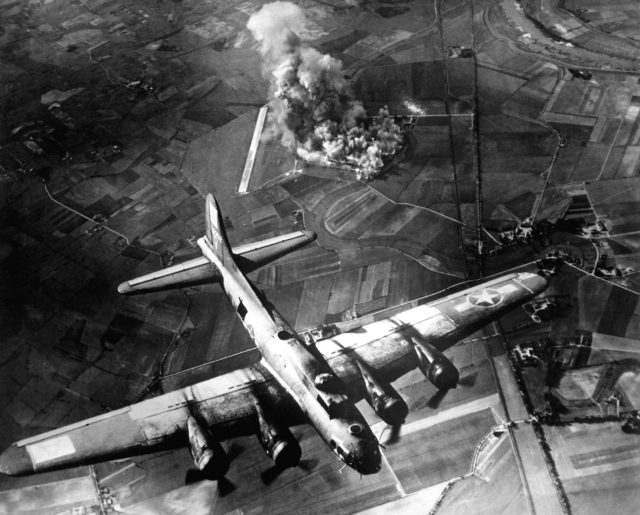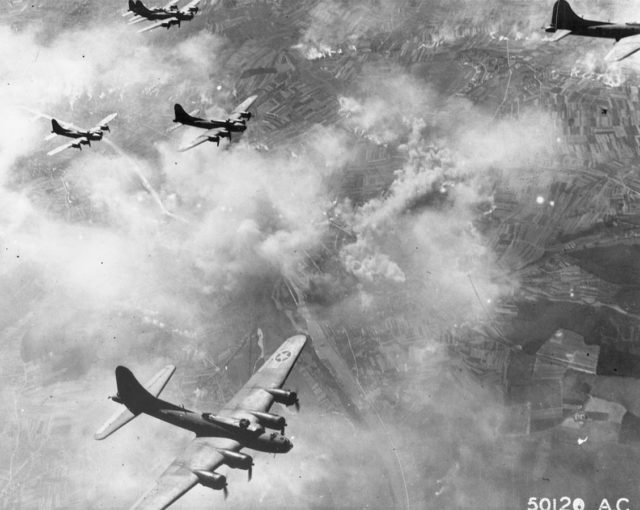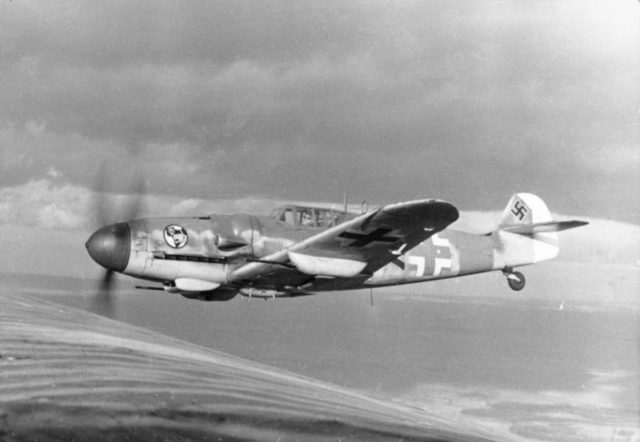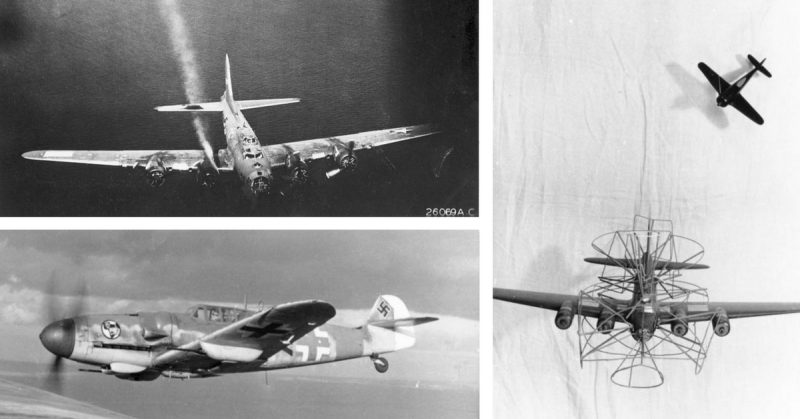Humanity can sometimes manifest itself in the most amazing ways and the unlikeliest of places. Take the case of the pilot who shot down another, only to help his victim get back to safety.
Ludwig Franz Stigler was born on August 21, 1915, in Regensburg, Germany. He idolized his father, Franz, who had been a reconnaissance pilot during WWI. He, therefore, chose to be called by his middle name.
His father and a friend started a gliding school for local children. Gliders were used because Germany was not allowed other aircraft after losing to the Allies. As a result, the young Stigler first flew in 1927 at the age of 12.
His glider crashed, but it was not his fault. His father had forgotten to add a counter balance to compensate for his son’s weight. It did not matter – Stigler was unhurt. Despite his unscheduled landing, he became hooked on flying.
At 17, Stigler began training for the priesthood until he was caught with the local brew master’s daughter. He was sent off to university to obtain a degree in aeronautical engineering.

Bored with academics, he dropped out to focus on flying. He worked for Lufthansa as an airline pilot for four years. In 1935 Nazi Germany gave up any pretense of following the Versailles Treaty by openly rearming and rebuilding its military.
Stigler was ordered to train pilots for the military. He also flew regular missions to supply the Franco regime during the Spanish Civil War. Stigler enjoyed being a flight instructor and got a thrill in 1939 when he trained his older brother.
In October 1940 his brother was shot down by the enemy. Stigler had been somewhat detached from the war, but his brother’s death made it personal. Desperate for revenge, he set off for Africa in 1942 and worked under the command of Gustav Roedel (credited with 37 kills).
Stigler made his first kill on May 31, and by April 1943, he had shot down 17 Allied planes – earning himself a place with the Jagdgeschwader (fighter band) 27. August found him back in Germany flying Messerschmitt Bf 109s against Allied bombing raids – further intensifying his hatred of the enemy.
Charles “Charlie” Lester Brown was born on October 24, 1922, in West Virginia. He enlisted in the US Army just a few days shy of his 17th birthday on October 19, 1939, and by April 16, 1942, he was a commissioned 2nd Lieutenant.

By 1943 Brown was a B-17F pilot with the 379th Bombardment Group stationed at the Royal Air Force (RAF) Kimbolton, England. Later that year, he was assigned to the Ye Olde Pub bomber plane of the 527th Bombardment Squadron.
On December 20 Brown and his crew of nine men flew to Germany on their very first bombing mission. Their target was an aircraft factory in Bremen.
The bomber did not fly alone but was part of a large convoy including escort fighters to maximize the damage. It was assigned to the Purple Heart Corner (on the edge of the formation), which was dangerous because it made an easy target for German fighter planes.
Sure enough, German flak found them before they had released their load. The Plexiglas nose shattered as bullets destroyed their number two and four engines, forcing the bomber to fall out of formation. They were sitting ducks.
More German fighters dove in for the kill – damaging their number three engine, internal oxygen, and wreaking havoc on the hydraulic and electric systems. The plane was barely responding to controls, and several guns had jammed.
Most of the crew had been hit, including Brown in his right shoulder. Sergeant Hugh “Ecky” Eckenrode, the tail gunner, had been decapitated. Despite flying as part of a squadron, no help was available. The other aircraft were busy fighting off the Germans or releasing their bombs over the target.

Stigler was ecstatic. He had already downed 27 enemy planes. All he needed was three more to earn the coveted Knight’s Cross. As soon as his plane was refueled, he took off.
As he got closer to the stricken bomber, he remembered what Roedel had told him: “If I ever see or hear of you shooting at a man in a parachute, I will shoot you myself!”
Stigler could see the faces of the frightened and wounded Americans. In a later interview, he claimed to have had an epiphany; he thought that must have been what his brother looked like before he died.
As the bomber’s radio was broken, Stigler signaled Brown to land his plane at a German airfield where they would receive medical care as POWs. Failing that, they could fly to neutral Sweden, but Brown did not understand. He ordered his dorsal turret gunner to aim at the German, but not to fire.
Stigler flew over the stricken bomber’s left wing to prevent other German fighters from shooting at them – thereby risking a court martial for treason. Once over the coast and out of German airspace, he saluted Brown and returned to his base.
Brown and his crew made it back to England with the loss of only one man. He reported the incident to his superiors who told him to keep quiet about it. Nice Germans!? Bad for morale. Brown never forgot, however. Neither did Stigler who often wondered if the Americans survived.
Brown spent the next several decades looking for Stigler, who had moved to Canada. The two met again on June 21, 1990, in Seattle, Washington.
Brown could not stop saying, “Thank you.”
Overcome, Stigler responded, “I love you, Charlie.”
